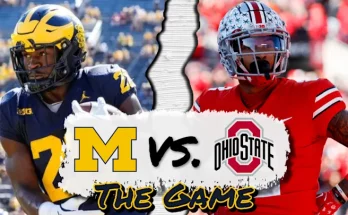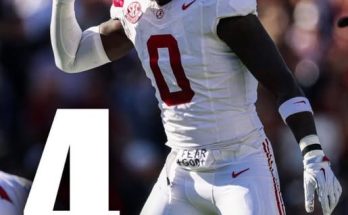The anticipation surrounding the College Football Playoff continues to build, and one matchup that would instantly capture the attention of fans across the nation is a potential first-round clash between the Texas Longhorns and the Ole Miss Rebels. Both programs boast a rich history, a passionate fan base, and rosters brimming with talent, which sets the stage for a game that could define the season for either team. If these two powerhouses were to meet in the opening round, it would be must-watch television, a true spectacle of athleticism, strategy, and sheer excitement.
The Texas Longhorns enter this scenario with a renewed sense of purpose. After years of rebuilding, the program has slowly returned to national relevance, consistently competing at a high level and developing a roster capable of challenging any opponent. The Longhorns’ coaching staff has emphasized a balanced approach, blending a dynamic offense with a disciplined, physical defense. On offense, Texas is led by a quarterback who has demonstrated the ability to read defenses, make quick decisions, and deliver accurate throws under pressure. The receiving corps features a combination of speed and size, capable of stretching the field vertically and creating mismatches in the secondary. The running game complements the passing attack perfectly, with a stable of backs who can both grind out tough yardage between the tackles and break off explosive plays when given space. The offensive line, often considered the foundation of any successful football team, has developed chemistry and technique that allow it to protect the quarterback effectively while creating running lanes for the backs.
Defensively, the Longhorns have proven to be adaptable and relentless. The front seven excels at applying pressure on opposing quarterbacks, disrupting timing, and stopping the run. Linebackers are versatile, capable of dropping into coverage or filling gaps to halt rushes, while the secondary combines athleticism with awareness, effectively limiting big plays and forcing opponents into difficult down-and-distance situations. Turnovers have been a hallmark of Texas’s defensive identity, as the team emphasizes creating opportunities and capitalizing on mistakes. Special teams, often an overlooked aspect of the game, also contribute to the overall impact of the Longhorns. From punt returns to field goal execution, Texas has displayed consistency, further enhancing its ability to control field position and momentum in critical moments.
Ole Miss, on the other hand, brings a high-octane brand of football that can overwhelm opponents with speed, creativity, and explosiveness. The Rebels are known for their aggressive offensive schemes, often deploying formations that confuse defenses and create mismatches across the field. The quarterback position has been a focal point of the team’s success, combining arm strength with mobility to make plays in both the passing and running games. The receiving corps features explosive athletes capable of turning short passes into long gains, and the running backs complement this with the ability to find seams and accelerate into open space. Ole Miss’s offensive line is skilled in both pass protection and run blocking, giving the team flexibility to execute a variety of plays that challenge defenses on multiple levels.
Defensively, Ole Miss has faced challenges, but the team’s approach is aggressive and opportunistic. The front seven focuses on penetrating the backfield and disrupting timing, while the secondary relies on speed and anticipation to counter opposing passing attacks. Despite occasional lapses, the Rebels’ defense has the potential to make game-changing plays, particularly when forcing turnovers or keying in on opponents’ tendencies. Like Texas, Ole Miss also emphasizes special teams, understanding that field position and momentum shifts can be pivotal in high-stakes matchups.
A Texas-Ole Miss first-round game in the College Football Playoff would be particularly intriguing because of the contrasting styles of play. Texas’s balanced approach, with an emphasis on controlling the line of scrimmage and limiting mistakes, would be tested against Ole Miss’s aggressive, high-tempo offensive philosophy. This type of stylistic clash has historically produced some of the most memorable games in college football history. Fans could expect a back-and-forth contest, with each team trying to impose its identity while countering the other’s strengths.
For the Longhorns, the key would be maintaining offensive discipline while controlling the tempo. Texas would need to execute its running game efficiently, keeping the Ole Miss offense off the field and wearing down the defense. The passing game would require precision and timing to take advantage of any gaps in the secondary, and the coaching staff would have to make real-time adjustments to neutralize the Rebels’ blitz packages and unconventional formations. Defensively, Texas would face the challenge of containing a versatile quarterback who can extend plays with both his arm and legs. The front seven would need to maintain gap discipline and apply consistent pressure without overcommitting, while the secondary must stay alert to the quick-hitting routes and deep threats that define Ole Miss’s passing game.
From the Rebels’ perspective, the formula for success would likely involve pushing the pace and exploiting any defensive weaknesses. Ole Miss would aim to create mismatches through motion, shifts, and creative play calling, forcing the Longhorns to defend the entire field. The quarterback would need to make quick decisions to keep the offense on schedule, and the running backs and receivers would have to capitalize on open space to generate explosive plays. On defense, Ole Miss would focus on creating turnovers, using aggressive pass rushes and coverage schemes to disrupt Texas’s rhythm. The ability to force mistakes and capitalize on short fields could be decisive in a game where momentum swings are expected to be frequent.
The potential storylines surrounding this matchup would only enhance its appeal to viewers. For Texas, a win would solidify the program’s status as a national contender, validating years of recruiting efforts and coaching development. It would provide a marquee victory in the College Football Playoff, elevating the Longhorns in the eyes of fans, media, and potential recruits. For Ole Miss, a victory would showcase the effectiveness of its high-powered offensive system and demonstrate that the Rebels can compete with the nation’s elite programs on a grand stage. Both teams would have personal and historical motivations, adding layers of narrative that make games more compelling for casual and die-hard fans alike.
The media coverage for such a matchup would be intense, with every storyline dissected and analyzed. Analysts would highlight the contrasting offensive and defensive philosophies, compare player matchups, and debate coaching strategies. Fans would engage on social media, sharing predictions, highlights, and reactions in real time, amplifying the spectacle. The combination of on-field drama and off-field narratives is part of what makes college football, and the playoff in particular, a uniquely captivating experience.
Television networks would likely capitalize on this matchup by devoting prime time coverage and leveraging enhanced broadcast technology to bring fans closer to the action. Advanced analytics, player tracking, and immersive camera angles could be employed to offer viewers deeper insight into the strategies at play. Commentary teams would highlight key plays, explain tactical adjustments, and bring the excitement of the stadium into living rooms across the country. For fans who enjoy a mix of strategy, athleticism, and high stakes, a Texas-Ole Miss game would be a perfect showcase.
The atmosphere inside the stadium would also be electric. Fans from both schools are known for their passion, and the intensity of a playoff game would amplify that energy. From pregame traditions to in-game chants and celebrations, the environment would provide an unforgettable experience for everyone in attendance. The pageantry of college football—marching bands, school colors, and fan rituals—adds an extra layer of spectacle that professional sports often cannot replicate. A matchup between Texas and Ole Miss would combine athletic excellence with rich traditions, creating a setting that is both thrilling and visually stunning.
Recruiting implications would also be significant. A high-profile playoff game offers programs the opportunity to showcase their style of play, coaching staff, and facilities to prospective student-athletes. A victory would signal to recruits that the program is capable of competing at the highest level, while a competitive showing—even in defeat—demonstrates resilience, talent, and strategic acumen. For both Texas and Ole Miss, performing well on this stage could have long-term benefits, influencing the quality of recruits in future classes and shaping the trajectory of the programs for years to come.
From a historical perspective, a first-round matchup between these teams would join a long list of memorable playoff and bowl games that have defined college football eras. Whether it’s the drama of a last-minute touchdown, a game-changing interception, or a strategic masterstroke by the coaching staff, games like this are remembered for decades. Fans, alumni, and media outlets would analyze the game from multiple angles, and it would likely be referenced in future debates about the best playoff matchups of all time. The stakes, talent, and storylines create the perfect storm for a classic contest that transcends a single season.
It is also worth noting the broader impact of such a game on college football as a whole. The playoff system is designed to reward excellence and create high-stakes matchups, and a Texas-Ole Miss clash would exemplify that goal. By pitting two top-tier programs with distinct identities against each other, the game would demonstrate the depth and diversity of talent in the sport. It would also highlight the importance of preparation, adaptability, and execution at the highest level. Fans, media, and analysts would gain a deeper appreciation for the nuances of college football, from in-game adjustments to player development and coaching strategy.



